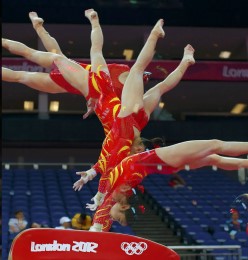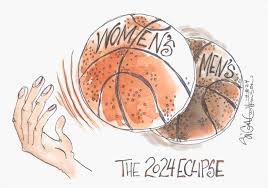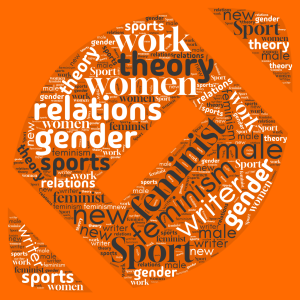1
Section One: The Fundamentals
A) What do we know about sport? What are common assumptions we make about sport and society?
|
Initially, I thought about the actual mechanics of sports and decided that it was a universal language. The prescribed rules and regulations create a perfect situation free from miscommunication, evidence of bias, or mistreatment of the instructions. On second thought, I expanded beyond the physicality of sports and thought about how many intentions are misinterpreted, how an athlete looks or dresses effects their reputation in the field, and considered the resources that are frequently required to achieve incredible successes (and how these are lacking in certain spaces.) Think about Naomi Osaka’s and Serena Williams’ outfits, which are non-traditional (but amazing!) and how coverage of tennis is focused on these details instead of the play. In Canada, we can look at that situation and look past their outfits, seeing it as normal and part of expression. In other parts of the world, focusing attention on this somewhat trivial part of the sport can be seen as disrespectful and disingenuous. Sports are only a universal language to those who speak it. As soon as there is the addition of players opinions nd life histories, or experiences outside of their sports, impactful decisions from administrators, or the disparity between those who can participate at the highest level is demonstrated, this language is no longer understood by all. |
Exercise 3: Notebook prompt
What are some other metanarratives about sport that you are familiar with? Find an image or video clip or draw something yourself that captures this idea…
So what? Why does any of this matter? Does it matter? As something we grow up with – live with – play through – we don’t often interrogate the meanings of sport, and perhaps we don’t want to.
But being aware of these assumptions and metanarratives is especially important, I would argue, because of the centrality of sport to our everyday lives, the role that sport plays in shaping our childhood and worldviews and….. [finish that thought]

I picked this image, because it demonstrates the idea that there is one ‘perfect’ answer in sports. Whether it is a score, a goal, or a penalty, technology gives the power of the referee to everyone…and the decision that ultimately, there is a perfect answer. Gymnasts have their skills analyzed at this level, both for the judges to see and for everyone watching at home. Any single mistake can be caught by even an untrained eye, encouraging the metanarrative that sports can lead to a straightforward, perfect answer every time. But being aware of these assumptions and metanarratives is especially important, I would argue, because of the centrality of sport to our everyday lives, the role that sport plays in shaping our childhood and worldviews and how it structures our futures. Accepting any truth without questioning it is dangerous, especially when such truths are embedded in our childhoods. We are required, at almost every interaction with sports, to look deeper than the obvious outcomes; being aware of metanarratives best prepares us for the daily interrogation that occurs when sports are played.
|
B) What is social justice?
Exercise 4: Padlet Prompt
Think back to the last section and try to look at some of the ideas we discussed differently. How might sport and social justice actually co-exist?
Record any images, video clips, or gifs you added to the padlet and identify a point of intersection between sport and social justice (can be an issue or a barrier or a debate or something you would like to explore in more depth in this course) . Screenshot or paste in your response below.
|
In thinking about intersectionality in sports, I am especially interested in learning about college-level sports and the support provided or withheld in cases where athletes are breaking barriers. Lia Thomas is the first openly transgender athlete to win an NCAA Division I national championship but has, at this time, been barred from competing in Olympic trials. Lia attended the University of Pennsylvania, and her time at Penn State heavily influenced the trajectory of her career in swimming. Being the ‘first’ at something is challenging, and college-level schools have an opportunity to encourage diversity and growth in the field of sports or prevent their athletes from achieving the highest potential honours.
|
C) Social Justice Reading
(note: this activity is optional!)

D) KINESIOLOGY AND SOCIAL JUSTICE
Exercise 5:



Exercise 6:
What are the implications of bodies-at-risk discourse and the refusal to understand the health gap from a social justice perspective, according to the authors of this article?
| Consequences of ignoring the health gap from a social justice perspective include creating a bigger health risk for people who are minoritized and marginalized. When conducting research in this field, an intersectional view is required. Speaking individually with subjects (using empirical research methods) will create more just and accurate results. Research results should be used to empower marginalized groups instead of discriminating and diminishing.
|
Section Two: Sport Feminism
Exercise 7: Notebook Prompt
What is feminism? What does it mean to you? Choose one of the images below and explain how it captures your understanding of feminism (or find one that does speak to you and paste this into your pressbook with an explanation of why it matters to you.
| The image of Rosie the Riveter is one of my favourite images of feminsim, mostly because of what it meant after World War II. Originally, while men went away during the War, the image symbolized women coming together to keep society moving. However, after the war when men returned, women were expected to go back to their positions before the War, both physically and in their families. I like this image because it reminds me of the strength it step up and keep space. It takes strength to learn new skills, uphold a place in society, and to maintain that when told to step away. Feminism, to me, is about making space and having allies agree to hold it with you. The allied part is so incredibly important; feminism has to come from everyone.
|
Exercise 8: Notes Prompt (optional)
NB: Cornell notes is a great resource that teaches effective notetaking. Unfortunately, our system can’t save notes taken in the H5P app, so this is fully optional.
Exercise 9: Crossword Activity

Exercise 10: Padlet Prompt
|
|

|
Social media has hugely changed the landscape. Moments that might have been missed because of low viewership—often tied to limited sponsorship and media coverage—now have the chance to go viral, bringing female athletes and their achievements into the spotlight. This exposure helps build excitement and draw new fans to women’s sports. Athletes like Angel Reese and Caitlin Clark have become household names, just like male athletes, thanks in part to social media’s reach and the power of storytelling beyond traditional broadcasts. The growing viewership of women’s basketball, hockey, soccer, and other sports has created recognizable figures and iconic moments that are celebrated across various media platforms. These athletes are no longer just role models for young girls; they’re inspiring fans of all ages and genders. It takes time for a movement to gain momentum, but with increasing visibility and consistent displays of talent, the landscape continues to change. We’re also seeing greater investment from sponsors and broadcasters, which helps fuel this growth. Networks are dedicating more airtime to women’s sports, and brands are recognizing the value of partnering with female athletes. As this momentum builds, it not only promotes equity in sports but also reshapes how society views female athleticism—making it clear that women’s sports are just as deserving as sports mainly featuring male athletes. |



